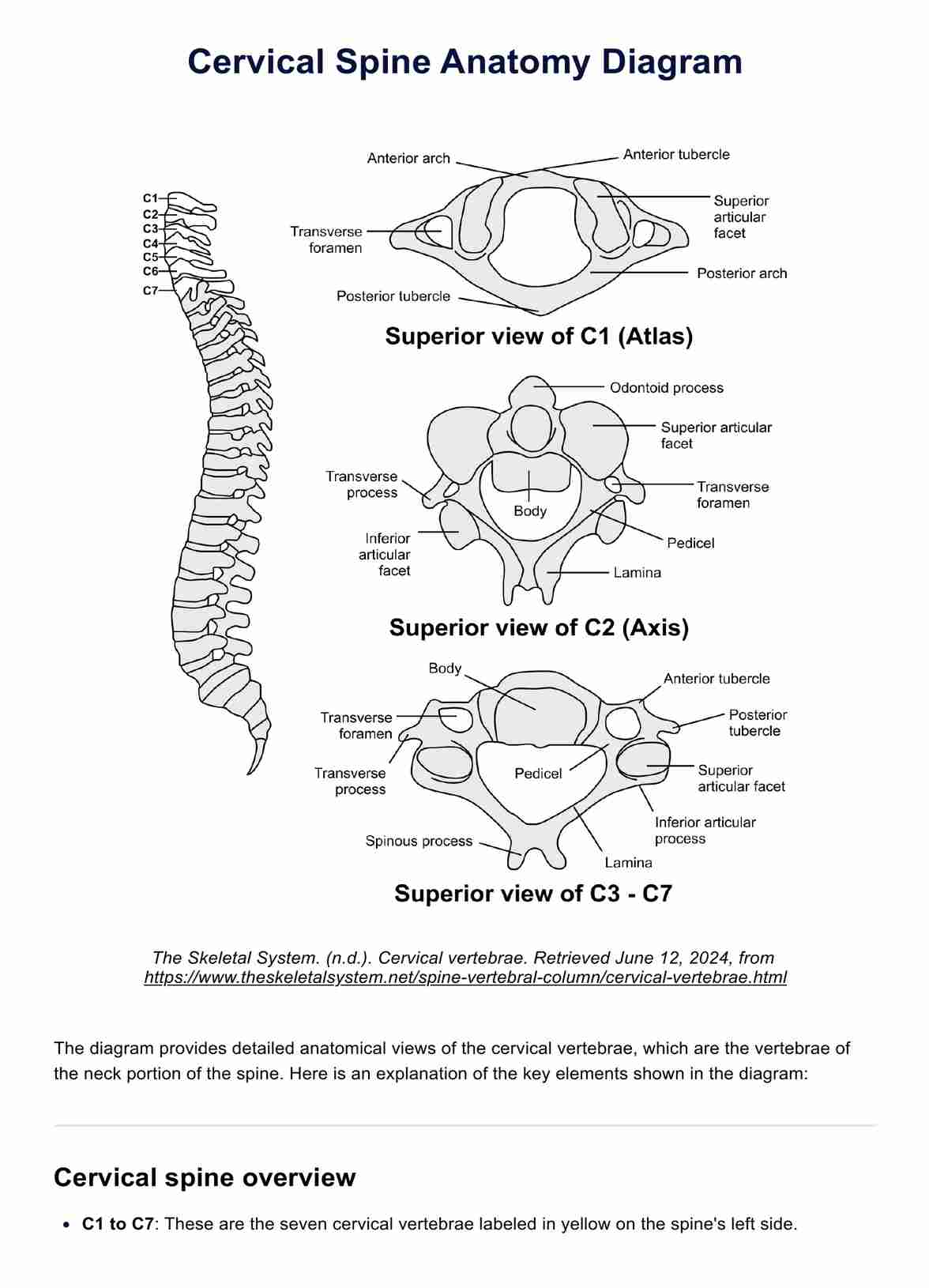The atlas (C1) is the first cervical vertebra. It supports the skull, allows nodding motions, and, along with the axis (C2), enables head rotation. It is crucial for the stability and mobility of the upper cervical spine.

Cervical Spine Anatomy Diagram
Learn about the anatomy of the cervical spine with our free downloadable diagram. Ideal for healthcare practitioners treating neck conditions.
Use Template
Cervical Spine Anatomy Diagram Template
Commonly asked questions
Cervical spine ligaments, including the anterior and posterior longitudinal ligaments, ligamentum flavum, and alar and transverse ligaments, maintain stability and alignment of the cervical vertebrae. They prevent excessive movements and protect the spinal cord and spinal nerves.
- Cervical spondylosis: Degenerative changes causing neck pain and stiffness.
- Herniated disc: Disc protrusion compressing spinal nerves or cord.
- Cervical radiculopathy: Nerve root compression causing pain and numbness.
- Cervical myelopathy: Spinal cord compression causing neurological deficits.
- Whiplash: Ligament and muscle injury from a sudden force.
- Cervical spine fractures: Trauma-induced vertebrae breaks.
- Osteoarthritis: Joint cartilage degeneration causing pain and reduced mobility.
EHR and practice management software
Get started for free
*No credit card required
Free
$0/usd
Unlimited clients
Telehealth
1GB of storage
Client portal text
Automated billing and online payments











